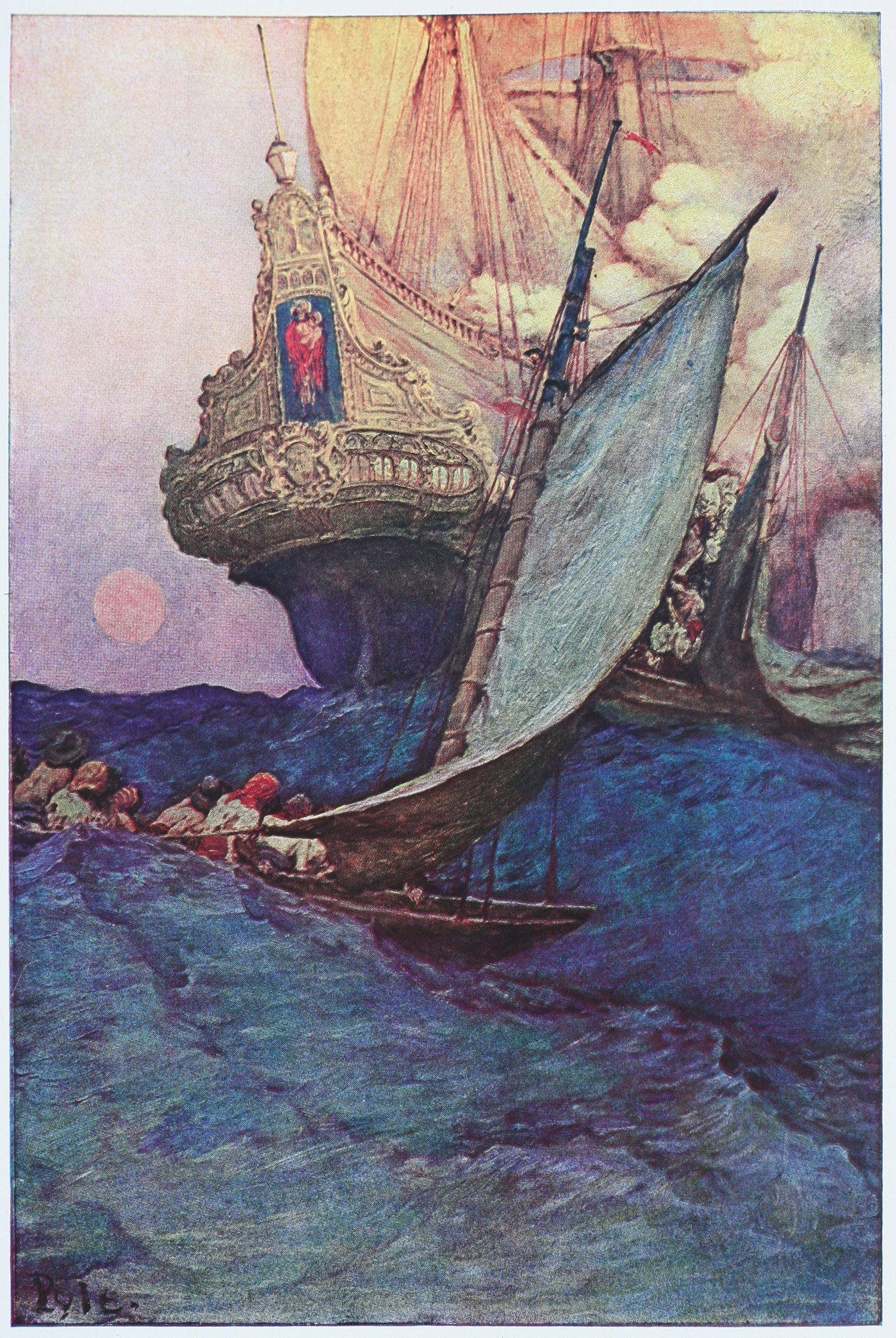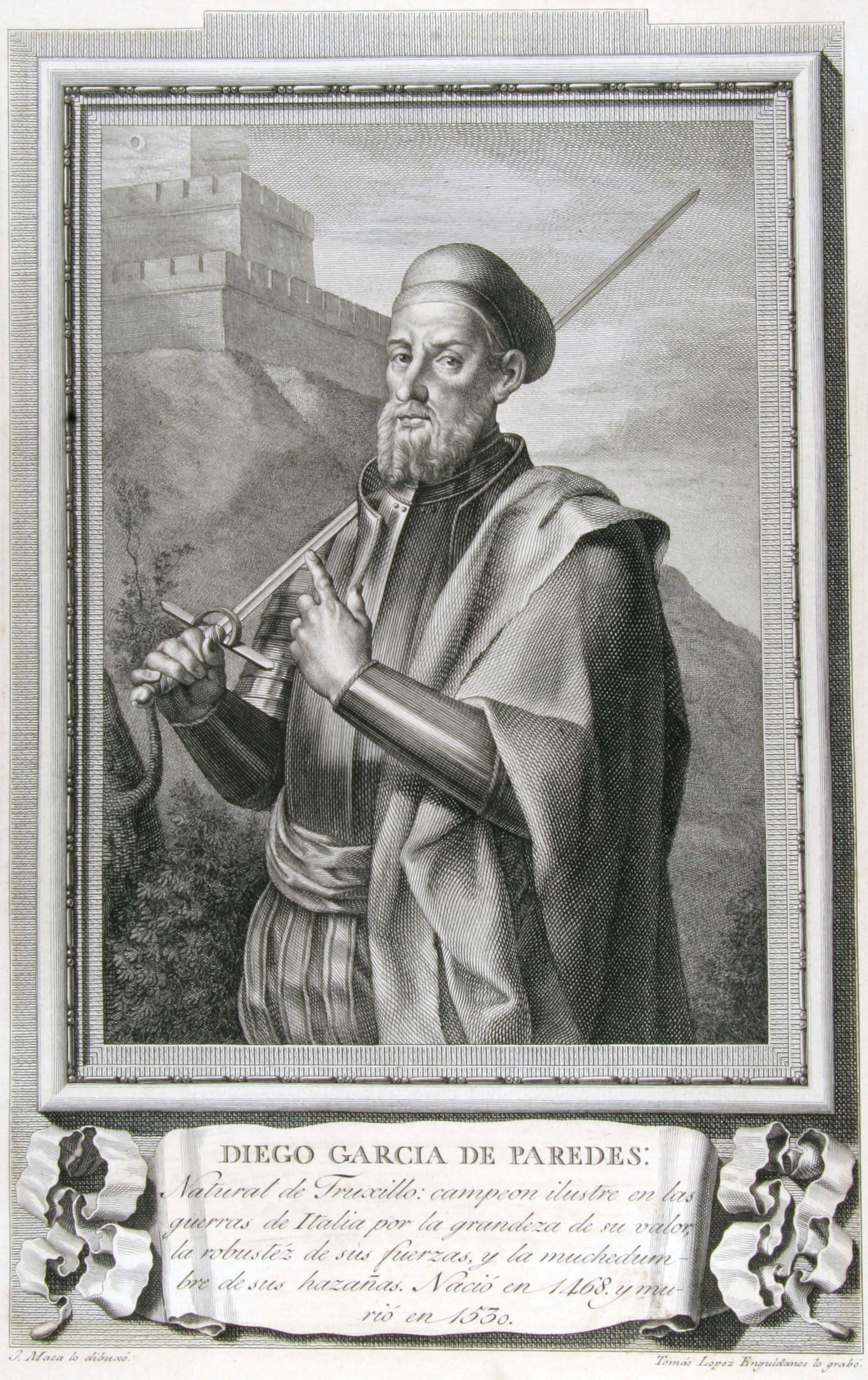|
Trujillo, Trujillo
Trujillo is the capital city of Trujillo State in Venezuela. About 40,000 people live in this city, located in El Valle de Los Mukas. History Founded by one of the "Conquistadores de America", Diego García de Paredes (1506 - 1563), son of Diego García de Paredes (the father), (1466-1534), Spanish soldier and duellist, native of Trujillo in Extremadura, Spain. In 1678, Trujillo was the farthest point in a daring raid on Spanish-held Venezuela, carried out by six pirate ships and 700 men led by the French buccaneer Michel de Grammont. Twin cities * Trujillo, La Libertad (Peru) * Trujillo (Honduras) * Trujillo, Cáceres Trujillo is a municipality located in Extremadura, an autonomous community of Spain in the Province of Cáceres. In 2013, the municipality had 9,086 inhabitants (INE Census, 2013). Originally settled on a granite knoll which was readily fortified ... (Spain) References Cities in Trujillo (state) Populated places established in 1557 1557 establi ... [...More Info...] [...Related Items...] OR: [Wikipedia] [Google] [Baidu] |
Countries Of The World
The following is a list providing an overview of sovereign states around the world with information on their status and recognition of their sovereignty. The 206 listed states can be divided into three categories based on membership within the United Nations System: 193 UN member states, 2 UN General Assembly non-member observer states, and 11 other states. The ''sovereignty dispute'' column indicates states having undisputed sovereignty (188 states, of which there are 187 UN member states and 1 UN General Assembly non-member observer state), states having disputed sovereignty (16 states, of which there are 6 UN member states, 1 UN General Assembly non-member observer state, and 9 de facto states), and states having a special political status (2 states, both in free association with New Zealand). Compiling a list such as this can be a complicated and controversial process, as there is no definition that is binding on all the members of the community of nations conc ... [...More Info...] [...Related Items...] OR: [Wikipedia] [Google] [Baidu] |
Populated Places Established In 1557
Population typically refers to the number of people in a single area, whether it be a city or town, region, country, continent, or the world. Governments typically quantify the size of the resident population within their jurisdiction using a census, a process of collecting, analysing, compiling, and publishing data regarding a population. Perspectives of various disciplines Social sciences In sociology and population geography, population refers to a group of human beings with some predefined criterion in common, such as location, race, ethnicity, nationality, or religion. Demography is a social science which entails the statistical study of populations. Ecology In ecology, a population is a group of organisms of the same species who inhabit the same particular geographical area and are capable of interbreeding. The area of a sexual population is the area where inter-breeding is possible between any pair within the area and more probable than cross-breeding with in ... [...More Info...] [...Related Items...] OR: [Wikipedia] [Google] [Baidu] |
Cities In Trujillo (state)
A city is a human settlement of notable size.Goodall, B. (1987) ''The Penguin Dictionary of Human Geography''. London: Penguin.Kuper, A. and Kuper, J., eds (1996) ''The Social Science Encyclopedia''. 2nd edition. London: Routledge. It can be defined as a permanent and densely settled place with administratively defined boundaries whose members work primarily on non-agricultural tasks. Cities generally have extensive systems for housing, transportation, sanitation, utilities, land use, production of goods, and communication. Their density facilitates interaction between people, government organisations and businesses, sometimes benefiting different parties in the process, such as improving efficiency of goods and service distribution. Historically, city-dwellers have been a small proportion of humanity overall, but following two centuries of unprecedented and rapid urbanization, more than half of the world population now lives in cities, which has had profound consequ ... [...More Info...] [...Related Items...] OR: [Wikipedia] [Google] [Baidu] |
Trujillo, Honduras
Trujillo is a city, with a population of 20,780 (2020 calculation), and a municipality on the northern Caribbean coast of the Honduran department of Colón, of which the city is the capital. The municipality had a population of about 30,000 (2003). The city is located on a bluff overlooking the Bay of Trujillo. Behind the city rise two prominent mountains, Mount Capiro and Mount Calentura. Three Garifuna fishing villages—Santa Fe, San Antonio, and Guadelupe—are located along the beach. Trujillo has received plenty of attention as the potential site of a proposed Honduran charter city project, according to an idea originally advocated by American economist Paul Romer. Often referred to as a ''Hong Kong in Honduras'', and advocated by among others the Trujillo-born Honduran president Porfirio Lobo Sosa, the project has also been met with skepticism and controversy, especially due to its supposed disregard for the local Garifuna culture. History Christopher Columbus la ... [...More Info...] [...Related Items...] OR: [Wikipedia] [Google] [Baidu] |
Trujillo, Peru
, population_note = , postal_code_type = Postal code , postal_code = 13001 , area_code = 044 , website Municipality of Trujillo, footnotes = Founded as ''Truxillo de Nueva Castilla'' (Trujillo of The New Castile) , image = , city_logo = , citylogo_size = , image_dot_map = , dot_mapsize = , dot_map_caption = , dot_x = , dot_y = , leader_title2 = , leader_name2 = , leader_title3 = , leader_name3 = , leader_title4 = , leader_name4 = , timezone = PET , utc_offset = −5 , timezone_DST = , ... [...More Info...] [...Related Items...] OR: [Wikipedia] [Google] [Baidu] |
Michel De Grammont
Michel de Grammont (c. 1645 – 1686?) was a French privateer. He was born in Paris, Kingdom of France and was lost at sea in the north-east Caribbean, April 1686. His privateer career lasted from around 1670 to 1686 during which he commanded the flagship ''Hardi''. He primarily attacked Spanish holdings in Maracaibo, Gibraltar, Trujillo, La Guaira, Puerto Cabello, Cumana and Veracruz. Biography Chevalier de Grammont was a nobleman who came into disfavour after killing his sister's suitor in a duel. Forced to leave France, he went to Hispaniola where he was given a French ship and served as a privateer. His first success was the capture of a Dutch convoy, valued at about 400,000 livres (US$4 million). On his next voyage he ran on a reef and sank. Grammont moved to Tortuga where he bought and outfitted a new ship which he used to attack Spanish shipping. When the Franco-Dutch War broke out between France and the Dutch Republic in 1678, he joined a fleet under the command of ... [...More Info...] [...Related Items...] OR: [Wikipedia] [Google] [Baidu] |
Buccaneer
Buccaneers were a kind of privateers or free sailors particular to the Caribbean Sea during the 17th and 18th centuries. First established on northern Hispaniola as early as 1625, their heyday was from the Restoration in 1660 until about 1688, during a time when governments were not strong enough and did not consistently attempt to suppress them. Originally the name applied to the landless hunters of wild boars and cattle in the largely uninhabited areas of Tortuga and Hispaniola. The meat they caught was smoked over a slow fire in little huts the French called ''boucans'' to make ''viande boucanée'' – ''jerked meat'' or ''jerky'' – which they sold to the corsairs who preyed on the (largely Spanish) shipping and settlements of the Caribbean. Eventually the term was applied to the corsairs and (later) privateers themselves, also known as the Brethren of the Coast. Though corsairs, also known as ''filibusters'' or ''freebooters'', were largely lawless, privateers were nomi ... [...More Info...] [...Related Items...] OR: [Wikipedia] [Google] [Baidu] |
Trujillo, Cáceres
Trujillo is a municipality located in Extremadura, an autonomous community of Spain in the Province of Cáceres. In 2013, the municipality had 9,086 inhabitants (INE Census, 2013). Originally settled on a granite knoll which was readily fortified, the town now extends to the southeast of its original site. Trujillo is both a centre for tourism, with over 25 hotels, and a regional market town. The old town contains many medieval and renaissance buildings. It hosts the national cheese festival in early May. History Trujillo was settled on a granite batholith during Prehistoric times. In Roman times, the town was known as ''Turgalium'' and became a prefecture stipendiary of the Lusitanian capital, Emerita Augusta (today's Mérida). Later, it was colonised by East Germanic tribes (mainly Visigoths), although the prevalence of the population would still have been Hispano-Roman. Following the Islamic conquest after 711, Trujillo became one of the main towns in the region (known as ... [...More Info...] [...Related Items...] OR: [Wikipedia] [Google] [Baidu] |
Diego García De Paredes
Diego García de Paredes (1466–1534), Spanish soldier and duellist, was a native of Trujillo in Extremadura, Spain. Biography He never commanded an army or rose to the position of a general, but he was a notable figure in the wars of the end of the 15th and beginning of the 16th century, when personal prowess had still a considerable share in deciding combat. His native town and its district, which lie between Badajoz and Madrid, produced many of the most noted ''conquistadores'' of America, including the Pizarro family. Diego himself served in his youth in the Granada War. His strength, daring, and activity fitted him to shine in operations largely composed of night marches, escalades, surprises and hand-to-hand combat. The main scene of his achievements was Italy, and he betook himself to it—on his own showing—not in search of glory, but because he had killed a relation of his own, Ruy Sanchez de Vargas, in a street fight arising out of a quarrel about a horse. He fled ... [...More Info...] [...Related Items...] OR: [Wikipedia] [Google] [Baidu] |
Monumento A La Paz (Virgen De La Paz, Estado Trujillo)
{{disambiguation ...
Monumento may refer to: * ''Monumento'' (album), a 2008 album by Dakrya * Monumento, a district in Caloocan, Philippines where the Bonifacio Monument is located ** Monumento LRT Station See also ''Monumento'' means monument in Portuguese, Spanish, and Filipino. For relevant articles in Wikipedia see: * Monuments of Portugal * Monument (Spain) The current legislation regarding historical monuments in Spain dates from 1985. However, ''Monumentos nacionales'' (to use the original term) were first designated in the nineteenth century. It was a fairly broad category for national heritage sit ... [...More Info...] [...Related Items...] OR: [Wikipedia] [Google] [Baidu] |
.jpg)






